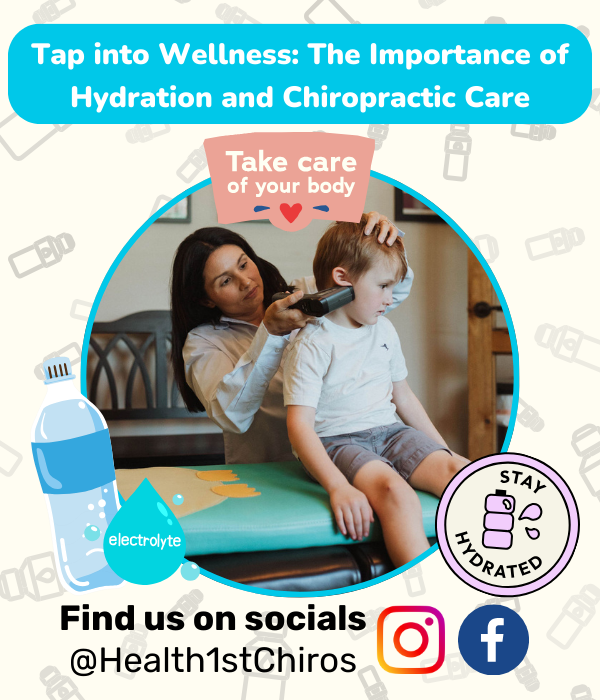The Tech Neck Epidemic: Protecting Your Cervical Spine in the Digital Age
- Dr. Gina
- Mar 31
- 3 min read

It’s no secret—we’re glued to our screens more than ever. Whether working at a desk, scrolling through social media, or binge-watching our favorite shows, technology is an unavoidable part of our lives. But here’s the downside: our posture is suffering, and so is our spinal health.
At Health1stChiros, we’ve seen a growing number of patients struggling with tech neck—a condition caused by constantly tilting the head forward while using digital devices.
Research shows that too much screen time is flattening our natural cervical curve, leading to early-onset spinal degeneration. But the good news? You can prevent it with a few simple adjustments.

How Tech Neck Affects Your Spine
Did you know your head weighs about 10-12 pounds in a neutral position? But as you tilt it forward—even just 15 degrees—the strain on your neck jumps to 27 pounds. At 60 degrees (the angle where most of us hold our phones), that force skyrockets to a whopping 60 pounds! That’s like carrying a small child on your neck for hours every day.
Over time, tech neck can lead to:
Loss of Natural Curve: Your cervical spine is supposed to have a gentle C-shape, but constantly bending forward flattens it out, causing instability.
Early Degeneration: Too much strain can speed up wear and tear, leading to issues like disc herniation, arthritis, and even spinal stenosis.
Chronic Pain & Tension: Certain muscles overwork while others weaken, leading to headaches, tight shoulders, and upper back pain.
Nerve Problems: Misalignment can pinch nerves, causing tingling, numbness, and even dizziness.
What the Research Says
A 2014 study in Surgical Technology International found that forward head posture significantly increases spinal stress, leading to chronic pain and disc issues.
A 2018 review in the Journal of Physical Therapy Science revealed that younger individuals are developing degenerative cervical spine changes at rates previously seen only in middle-aged adults.
Research from The Spine Journal links tech neck to reduced lung capacity, as poor posture affects breathing efficiency. Try this: slouch, then sit up straight and take a deep breath—which position allows more oxygen intake?
Clearly, this is a growing issue. But the good news is, it’s preventable.
How to Prevent Tech Neck (Without Ditching Your Devices)
Let’s be real—none of us are giving up our screens anytime soon. But small changes can make a huge difference:
1. Fix Your Screen Setup
Keep your monitor at eye level so you’re not always looking down.
Hold your phone higher (yes, it feels weird at first, but your neck will thank you!).
If you use a laptop, get a stand or an external keyboard so you’re not hunched over.
2. Check Your Posture
Try to keep your ears in line with your shoulders—this keeps your neck in a neutral position. Pull your belly button into your spine when sitting and standing to engage your core muscles versus your back muscles.
Strengthen your postural muscles with simple exercises like chin tucks and shoulder blade squeezes.
Avoid slouching by using a supportive chair or a lumbar cushion.
3. Take Breaks & Move More
Follow the 20-20-20 rule: Every 20 minutes, look 20 feet away for 20 seconds to give your neck a break.
Set reminders to stand up, stretch, and move throughout the day. Every 30 minutes change position from sitting to standing, stretch your neck, or walk to get a drink of water.
Add in activities like yoga or mobility exercises to balance out long periods of sitting. Hot Yoga provides an added detox benefit.
4. Get Professional Help
Chiropractic care can help realign your cervical spine and relieve neurological and muscular tension.
SoftWave Therapy encourages tissue repair and reduces inflammation via angiogenesis and stem cell migration help damaged tissue to heal.
Regular chiropractic care and strengthening neck exercises can keep small issues from turning into bigger problems down the road.
Final Thoughts
Technology isn’t going anywhere, but neck pain doesn’t have to be part of your life. By making small adjustments to your posture, taking regular breaks, and seeking professional chiropractic care, you can protect your spine and prevent long-term damage.
Struggling with neck pain, headaches, or poor posture?
At Health1stChiros, we specialize in spinal health and posture correction. Book a free consultation today and take the first step toward a pain-free life.
👉 Schedule Your Visit Now





Comments